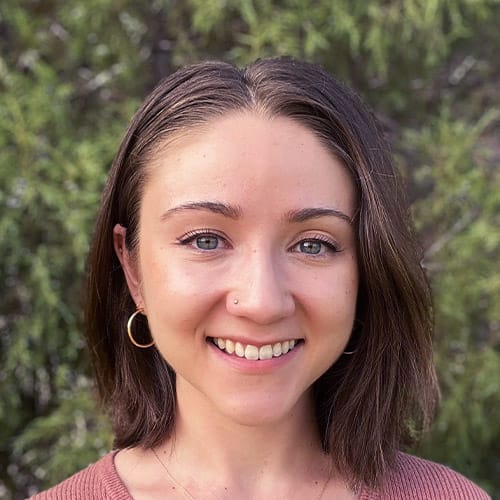
Medicare, Medicaid, and Long-Term Care

Many seniors and their families search for ways to make long-term care more affordable. In some cases, Medicare and Medicaid can help by financing senior health services and some types of senior living. Though not everyone qualifies for these programs, many individuals do — potentially reducing their senior care costs. Whether Medicaid and Medicare will help with your family member’s senior living costs depends on several factors, such as their age, income, and required level of care. It also depends on communities themselves, as some accept Medicaid as a payment method, while others require private pay.
Let our care assessment guide you
Our free tool provides options, advice, and next steps based on your unique situation.
Key Takeaways
- Medicaid and Medicare cover some senior living costs. However, seniors who require medical care are likely to benefit the most.
- Not every senior living community accepts Medicaid. If your prospective community does accept it, contact your state Medicaid office to apply.
- Take advantage of Medicare’s components. Depending on the type of care, Medicare may cover medical costs, such as skilled nursing and prescriptions.
- Use your local resources. Make the most of public benefits by contacting local offices for support.
As many as 6 million eligible Americans either don’t apply for or don’t use their benefits each year, according to the Centers for Medicare & Medicaid Services. Many factors contribute to this staggering number, notes Letha Sgritta McDowell, an elder law attorney who practices at Hook Law Center in Virginia and North Carolina.
“It’s really about comprehending the rules,” explains McDowell, who also serves as president of the National Academy of Elder Law Attorneys (NAELA). “Many people don’t understand the intricacies of how public benefits work.”
What is Medicaid?
Medicaid is a state and federal program designed to provide health care coverage to vulnerable populations, or to people who might not otherwise have health insurance. It’s currently the largest source of health insurance in the U.S., providing coverage for people with low income or significant medical expenses.[01] For certain populations, Medicaid also covers long-term care provided in a nursing home or via home and community based services.
Since Medicaid is administered by individual states, the program’s coverage provided — as well as eligibility requirements — vary significantly based on where you live. Due to this complexity, it’s often best for seniors and their families to work with an elder law attorney, specifically one who focuses on Medicaid planning.
Who’s eligible for Medicaid?
To qualify for Medicaid long-term care, an applicant must meet financial requirements (income and asset limits) and functional requirements (such as needing a nursing home level of care). Specific eligibility requirements for long-term care coverage vary by state and by program.[02]
If your family member is planning to apply for Medicaid, it’s a good idea to contact your state medical assistance office for more details. Depending on where you live, Medicaid programs may go by different names.
How to become eligible for Medicaid through Medicaid “spenddown”
In many cases, older adults may have income above the Medicaid threshold yet still find themselves in need of public assistance due to high medical costs. Several states address this through a Medicaid “spenddown,” which allows seniors to reduce their countable income by subtracting allowable medical expenses. By lowering their countable income, these individuals may become eligible for Medicaid. This may also be referred to as the medically needy pathway to Medicaid eligibility.
For example, a single senior might receive $2,000 each month in income but live in a state that requires Medicaid recipients to have monthly income below $1,215. If their state has a Medicaid spenddown program, they could qualify for Medicaid by spending $785 each month on medical expenses, including prescription drugs, doctor copays, and long-term care costs. Spend down periods vary by state and may be anywhere from one month to six months in length. After a senior spends down to their state’s medically needy income limit, they’re eligible for Medicaid for the rest of the period (as long as they meet all other criteria). It’s important to track and document all medical expenses if you’re considering a Medicaid spenddown.
What is Medicare?
Medicare provides federal health insurance coverage to almost all Americans ages 65 and older and to younger people with certain disabilities or medical conditions. It has several separate components: [03]
- Part A, hospital insurance, which helps pay for inpatient care in a hospital or a skilled nursing facility, as well as some home health care and hospice care services.
- Part B, medical insurance, which helps pay for doctors’ services and many other medical services and supplies.
- Part C, or Medicare Advantage Plans, are sold by private health insurance companies. Medicare Advantage Plans include all of the same benefits as Medicare Parts A and B, but these plans are administered by Medicare-approved private insurance companies rather than by Medicare directly.
- Part D, or prescription drug coverage, which helps pay for medications prescribed by seniors’ physicians or other specialists.
While most people don’t pay a premium for Part A, Medicare’s other forms of coverage come with monthly costs for seniors.
Who’s eligible for Medicare?
Medicare recipients must meet one of the following requirements:[04]
- Be age 65 or older
- Have a disability determined by the Social Security Administration
- Have amyotrophic lateral sclerosis (ALS) or end-stage renal disease
Medicare open enrollment occurs annually between October 15 and December 7. This is when eligible seniors can make changes to their Medicare benefits.[05]
If seniors apply for Social Security retirement or disability benefits before they turn 65, they may be automatically enrolled in Medicare Parts A and B. Eligible adults who wait until they’re 65 or older to receive retirement benefits or enroll in Medicare must actively sign up for Medicare coverge.[06] Seniors who choose to enroll in Medicare Advantage plans will have to select a plan, complete paperwork, and pay monthly premiums. The Social Security website is a resource that can help seniors review requirements and start the Medicare application process.
Public payment options for independent living
According to A Place for Mom’s 2023 proprietary data, the national median cost of independent living is $3,000 per month.[07] While independent living is typically one of the least expensive senior living options, public pay options do not cover these costs.
Does Medicare pay for independent living?
Since Medicare covers only health care services, it doesn’t pay for independent living. Seniors in independent living are usually healthy and active. They choose this senior living option for benefits like housekeeping, lawn maintenance, and social activities.
Does Medicaid pay for independent living?
Because independent living doesn’t include medical services or personal care services, Medicaid doesn’t cover this senior living setting.
Public payment options for assisted living
According to A Place for Mom’s 2023 proprietary data, the national median cost of assisted living is $4,807 per month.[07] Assisted living provides care to seniors who are largely independent but could benefit from assistance with activities of daily living (ADLs), which is also referred to as custodial care. While Medicare doesn’t cover this type of care, Medicaid has more to offer.
Does Medicare pay for assisted living?
No, Medicare doesn’t cover long-term care or custodial care, so it doesn’t pay for assisted living. However, Medicare will continue to cover a senior’s approved medical care.
Does Medicaid pay for assisted living?
Some — but not all — states have Medicaid state programs or Medicaid waiver programs that help cover the costs of home and community based services like assisted living. Medicaid is not accepted in every assisted living community, and it usually won’t cover the total price of room and board. However, medical expenses that occur in assisted living may be covered by Medicaid.
In some states, Medicaid can be used to pay for the following:
- Help with ADLs, like toileting, mobility, and dressing
- Home health services, which may be provided in an assisted living community
- Physical, occupational, or speech therapy
- Medication management

Let our care assessment guide you
Our free tool provides options, advice, and next steps based on your unique situation.
Public payment options for memory care
According to A Place for Mom’s 2023 proprietary data, the national median cost for memory care is $5,995 per month.[07] This type of senior living caters to seniors who experience memory challenges due to Alzheimer’s disease or another form of dementia. Both Medicare and Medicaid cover some services outside of room and board.
Does Medicare pay for memory care?
Medicare won’t pay for rent, board, or personal care in memory care facilities. However, Medicare does cover many health care costs associated with dementia, such as cognitive testing, medical appointments, and necessary medications.
Does Medicaid pay for memory care?
The cost of memory care room and board is not covered by Medicaid. However, as long as the memory care facility accepts Medicaid and is licensed as a Medicaid-approved memory care community, waivers may cover some services. Waivers and coverage amounts vary depending on where a senior receives memory care.
Seniors who receive dementia care services in an assisted living community can apply for coverage of home and community based services (HCBS). HCBS programs may be used to cover some of the assisted living care costs, reducing senior living expenses.
Seniors who receive dementia care services in a nursing home can receive full Medicaid coverage. As long as a senior needs both dementia care and skilled nursing care, Medicaid will cover services, room, and board.
Public payment options for nursing homes
The national median cost for nursing homes varies by room type. Families can expect to pay $7,908 per month for a semi-private room or $9,034 for a private room.[08] This type of long-term care is only covered by Medicaid.
Does Medicare pay for nursing homes?
“The number one misconception about Medicare is that it will pay for your long-term care,” says McDowell. Medicare will only pay for short-term stays in nursing care facilities, like a rehabilitative stay after hospitalization or an end-of-life hospice stay.
Seniors who need care in a skilled nursing facility due to an injury or period of acute illness can receive Medicare coverage for up to 100 days, but only after incurring a qualifying three-night hospital stay. In addition, the patient must require skilled care to prevent a decline in their condition.
A covered stay in a skilled nursing facility comes with the following costs: [09]
- Older adults pay nothing for the first 20 days, with Medicare covering the entire bill.
- Medicare pays for nearly all costs for days 21-100. However, seniors are responsible for approximately $200 per day in coinsurance. Skilled nursing facility coinsurance is at least partially covered by most Medicare supplement (Medigap) plans.
- After 100 days, Medicare will not pay for any skilled nursing facility costs.
Medicare also covers hospice and palliative care in a senior’s home, including long-term care settings.[10]
Does Medicaid pay for nursing homes?
Medicaid pays for long-term care in a nursing home if a senior meets the program’s eligibility criteria. Once approved, seniors must pay a monthly coinsurance amount based on their income. If a senior’s prospective nursing home accepts Medicaid, the program will then cover nearly all associated costs including a senior’s room, board, and health care services.
Public payment options for home care and home health care
According to A Place for Mom’s 2023 proprietary data, the national median cost for nonmedical home care is $30 per hour.[07] This type of senior care mainly provides companionship and assistance with activities of daily living (ADLs). Home health care is a type of medical care provided in a senior’s home, which can include specialized therapies and skilled nursing care.
As long as a home care service is medically necessary, Medicare and Medicaid may provide some coverage.
Does Medicare pay for home care?
Medicare doesn’t pay for long-term home care. Medicare only covers medically necessary part-time or intermittent home health care services for homebound seniors. Generally, this amounts to up to eight hours of care per day, with a maximum of 28 hours per week. A senior may be able to qualify for more frequent care for a short time if their doctor or other health care provider determines it’s necessary.[11]
Medicare primarily pays for treatments that help seniors recuperate from an injury or illness, such as: [11]
- Physical therapy
- Occupational therapy
- Speech-language pathology services
- Part-time skilled nursing care
If they’re able, some families hire an in-home caregiver to give their loved one companionship or to reduce their household responsibilities, like chores and meal preparation.
Medicare doesn’t pay for these aspects of home care: [11]
- 24-hour care
- Meal preparation or delivery
- Household tasks like personal shopping, cleaning, and laundry
- Personal care services like assistance with bathing and toileting, if that’s the only care a senior needs
Does Medicaid pay for home care?
Medicaid pays for home health care for qualifying seniors in all states. If a senior requires medically necessary home health care and meets the financial criteria, Medicaid will cover the costs of the following items and services: [12]
- Skilled nursing care
- Home health aide support
- Medical supplies
You can also check for Medicaid home and community based services programs to help pay for the following nonmedical home care services: [13]
- Assistance with ADLs
- Help with cooking, cleaning, and laundry
- Transportation
- Assistance with medical devices
How to choose a senior living facility that accepts Medicaid
Whether your family member currently has Medicaid coverage or thinks they may be eligible someday, public payment sources can significantly alter the senior living options that are available to them. Many communities don’t accept Medicaid, so it’s crucial to plan ahead and verify this information upfront.
Consider the following tips when searching for senior living:
- Contact your state Medicaid office. Representatives can typically connect families with long-term care communities that accept Medicaid benefits, as well as offer other resources and information.
- Ask questions specifically related to public pay. Verify whether prospective communities accept Medicaid, find out how many beds or units are reserved for residents who receive Medicaid, and determine if there’s a waiting list. Plus, if it applies to your loved one, ask what happens if they aren’t eligible for Medicaid at move in but become eligible at a later date.
- Schedule a virtual or in-person tour. Tours can help you gain insight into community life and allow you to compare different facility options.
- Download A Place for Mom’s community touring checklist. This free resource suggests questions to ask and includes a convenient space for caregivers to take notes. It can help you compare communities based on your budget, care needs, observations, and preferences.
- Get input from all decision makers. If your loved one is well enough to weigh in on their own care, ask for their opinion and perspective. Invite them to tour several communities, meet the staff, and ask questions. Similarly, if siblings or other relatives are involved, make sure everyone is on the same page about long-term care decisions.
- Gather necessary documents and paperwork. Most communities will request a wide range of medical documents to ensure they can properly care for your parent. These typically include proof of diagnoses, medication lists, and doctors’ notes. If your loved one is in the hospital, ask their case manager to fax these documents to communities you’re considering. Otherwise, schedule a doctor’s appointment for your relative to complete this process.

Talk with a Senior Living Advisor
Our advisors help 300,000 families each year find the right senior care for their loved ones.
Moving into a senior living community
After you’ve chosen the right community and determined availability, it’s time for your loved one to move in. The following tips can help make this process as smooth as possible:
- Identify what moving day will look like. How many people will be involved in the moving day process? What items will you bring right away, and how will they fit into the new space? Are you planning on hiring a senior move manager? Considering these questions in advance can help you make a clear plan.
- Bring essential admissions documents and paperwork. These documents include your loved one’s Medicare card, all secondary insurance cards, medical paperwork, and a list of emergency contacts. Additionally, bring any legal paperwork, including power of attorney documents, a living will, and any Do Not Resuscitate (DNR) orders.
- Participate in discussions about your loved one’s care plan and next steps. Even though your relative is moving, you can still be involved. Ask about when care plan meetings will be and what to expect from staff communication.
Additional resources for navigating Medicare, Medicaid, and long-term care
Determining how Medicaid and Medicare help cover senior living can be a challenge for most seniors and their families. One-size-fits-all advice may not apply to each family’s unique situation, especially low-income seniors.
“Doing your own research and then talking to an expert is so critical,” urges McDowell. “In the same way a financial advisor or accountant would talk to someone about how to reduce their taxes, that’s how an elder law attorney would help someone decide the best option for their long-term care.”
Browse the resources below for further assistance with long-term care and benefits planning:
- Seniors and their families can use the National Academy of Elder Law Attorneys (NAELA) database to find a qualified, local elder law attorney. Consider seeking an attorney who specializes in Medicare and Medicaid policies.
- Senior veterans may be eligible for other cost assistance, such as Veterans Affairs (VA) benefits.
- Get answers to your Medicare questions by calling 1-800-MEDICARE (1-800-633-4227), or by contacting the Centers for Medicare & Medicaid Services (CMS) office in your region.
Experts in your state or territory can help answer questions about specific Medicaid policies. Find your state Medicaid agency’s website below to contact them directly:
- Alabama
- Alaska
- Arizona
- Arkansas
- California
- Colorado
- Connecticut
- Delaware
- District of Columbia
- Florida
- Georgia
- Hawaii
- Idaho
- Illinois
- Indiana
- Iowa
- Kansas
- Kentucky
- Louisiana
- Maine
- Maryland
- Massachusetts
- Michigan
- Minnesota
- Mississippi
- Missouri
- Montana
- Nebraska
- Nevada
- New Hampshire
- New Jersey
- New Mexico
- New York
- North Carolina
- North Dakota
- Ohio
- Oklahoma
- Oregon
- Pennsylvania
- Puerto Rico
- Rhode Island
- South Carolina
- South Dakota
- Tennessee
- Texas
- Utah
- U.S. Virgin Islands
- Vermont
- Virginia
- Washington
- West Virginia
- Wisconsin
- Wyoming
Key Takeaways
American Hospital Association. (2023). Medicaid.
Medicaid.gov. Medicaid eligibility.
Medicare.gov. Parts of Medicare.
Medicare.gov. Get started with Medicare.
Centers for Medicare & Medicaid Services. (2023, September 6). Medicare open enrollment.
Medicare.gov. Get started with Medicare.
A Place for Mom. (2023). A Place for Mom proprietary data.
Genworth. (2021, November). Cost of care survey.
Medicare.gov. Skilled nursing facility (SNF) care.
Medicare.gov. Hospice care.
Medicare.gov. Home health services.
Congressional Research Office. (2022, September 15). Medicaid coverage of long-term services and supports.
Medicaid.gov. Home and community-based services 1915(c).
Senior living options in all states
The information contained on this page is for informational purposes only and is not intended to constitute medical, legal or financial advice or create a professional relationship between A Place for Mom and the reader. Always seek the advice of your health care provider, attorney or financial advisor with respect to any particular matter, and do not act or refrain from acting on the basis of anything you have read on this site. Links to third-party websites are only for the convenience of the reader; A Place for Mom does not endorse the contents of the third-party sites.
Make the best senior care decision
Make the best senior care decision